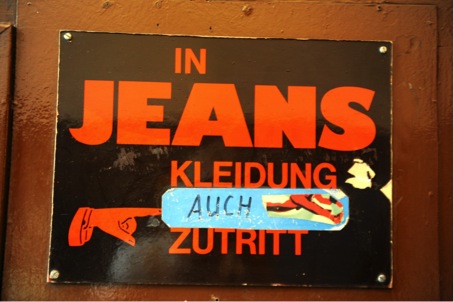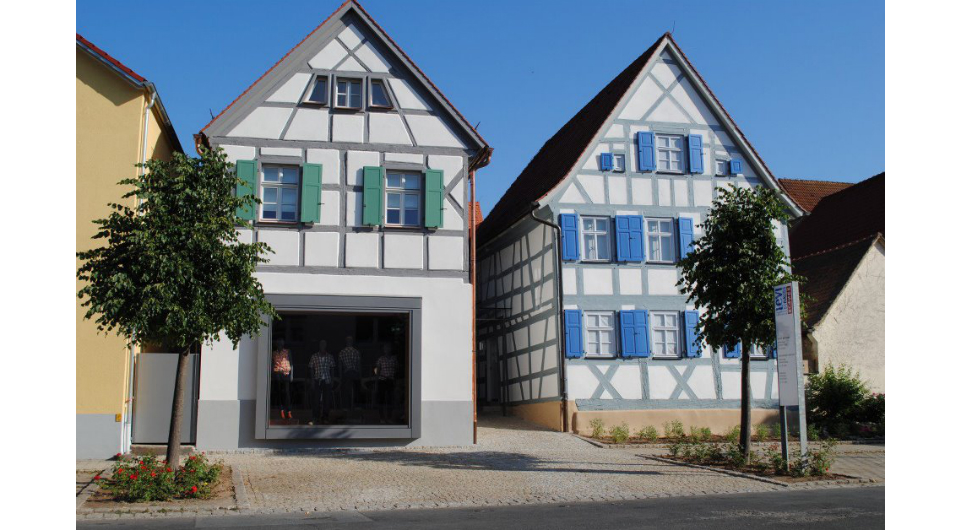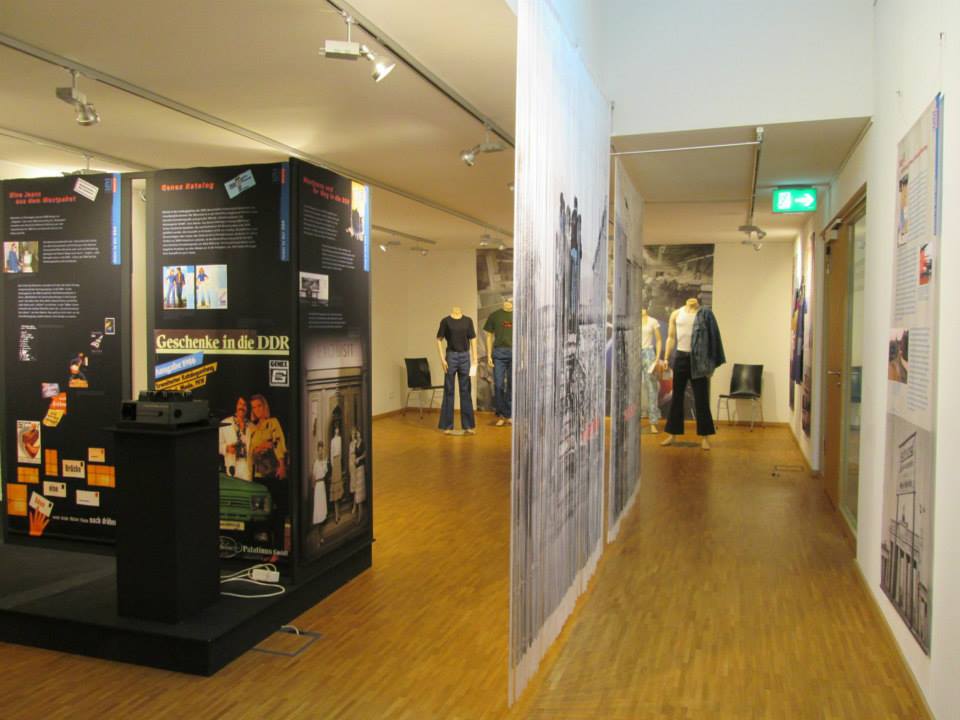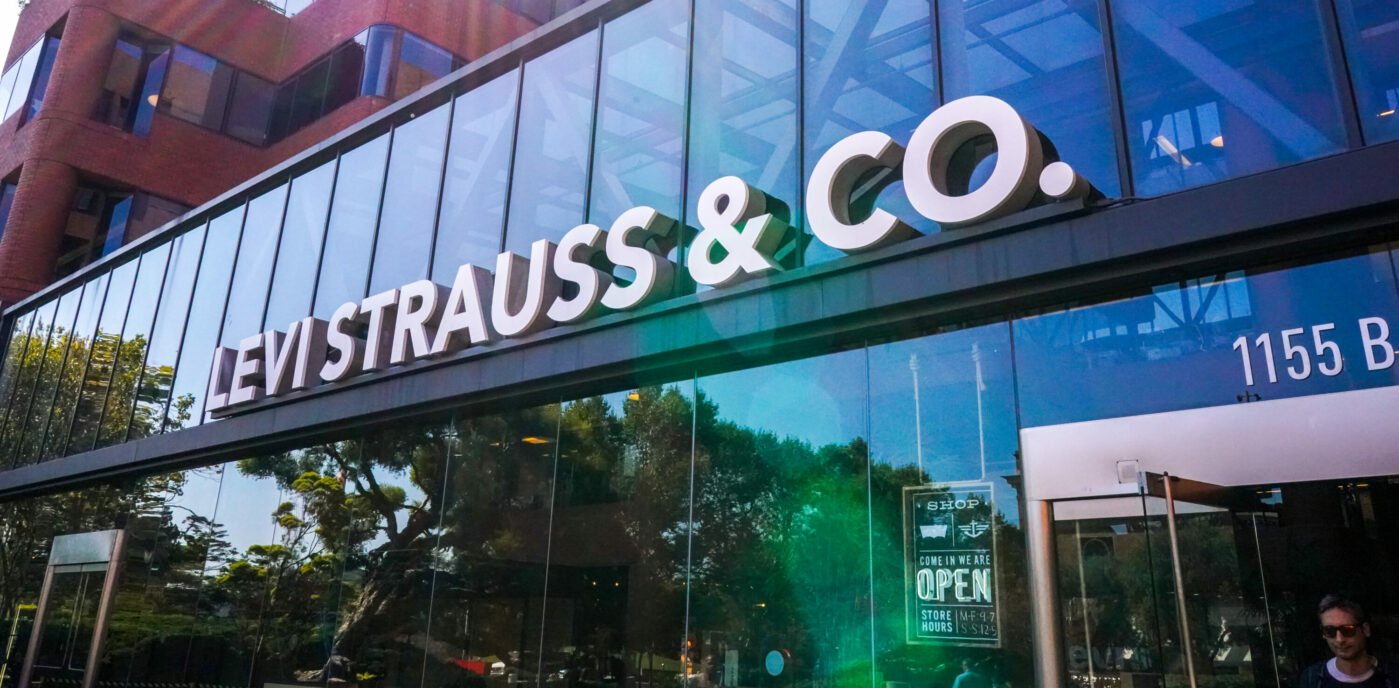The Levi Strauss Museum is located in the house where Levi Strauss was born in Buttenheim/Southern Germany. In its permanent exhibition the biography of Levi Strauss and the success story of jeans are shown. Annual special exhibitions concentrate on topics which are in some way related to jeans, emigration, textiles or Levi Strauss. This year marks the 25th anniversary of the fall of the Berlin Wall, which led to a special exhibition focused on the role jeans played in former East Germany.
For the youth in the German Democratic Republic, jeans were more than just pants, they showed attitude and were a piece of the West they painstakingly got hold of. By way of the iconic blue pants, our exhibition shows multiple sides of German history:
After the Second World War, Germany was divided among the Allies into four occupied areas and each ally also got one sector of the capital city Berlin. The German Democratic Republic arose from the Russian sector in 1949 and orientated itself towards the USSR. It was ruled by only one party, the Socialist Unity Party of Germany, and a new social order based on socialism was established. To secure the power of the dictatorial governing Socialist Unity Party, as well as for the surveillance of enemies of the state, the Ministry of State Security was set up. Because many citizens were dissatisfied with their living conditions, they tried to leave the country. To stop them, the border was at first fortified with barbed wire and finally on August 13th, 1961, the Berlin Wall was set up. For 28 years it separated families and friends and divided Germany into two separate states.

This Levi’s trucker jacket (left) was sent to a 17-year old young man living Leuna by an uncle from the West in the 1970s. He wore the jacket and the pair of Levi’s pants which came along with it for many years. While the pants are gone, he kept the jacket until today. For him it is a symbol of resistance.
To protect the youth from western capitalist influences, the Socialist Unity Party tried to introduce a socialist clothing culture in East Germany. Jeans were considered as capitalist influence and jeans-wearers were enemies of the state. The entrance to dance halls forbade the so-called “riveted pants” and pupils wearing jeans were sent home from school. But international fashion could not be stopped at the iron curtain — despite all efforts, it was western trends that were most en vogue in the East.
For people living in the East, it was not so easy to get hold of a pair of Western Jeans. The most common way was to ask relatives in West Germany to send the coveted pants in a so called “Western parcel” together with other rare consumer goods such as soap, perfume and nylons.
For exorbitant sums of money it was also possible to buy jeans on the black market or in so called “Intershops”. Youth with no relatives in the West had to look for alternative ways to obtain pants that looked at least similar to Western jeans. They sewed them themselves out of blue cloth and equipped them with rivets which could be bought separately. Guest workers from Vietnam filled a market niche: in their spare time they produced custom-made jeans out of denim imported from Vietnam and even equipped them with “original” labels. This way many young people got their Western jeans “Made in GDR” (German Democratic Republic).
From 1974 on the regime of the GDR finally gave in and started to produce the first Eastern German jeans. They bore names like “Goldfuchs” (Gold fox), “Wisent” (“European bison”) or “Boxer” and were produced to placate the youth in their desire for jeans. As raw material was subject to a quota and there never was enough cotton, GDR-jeans were partly produced of synthetic fibers. That made the pants uncomfortable to wear and additionally they lacked the typical fading effect jeans usually have. Most East German jeans also did not have both quality and style people knew from Western brands and they were never able to achieve a similar status.

Almost forgotten East German jeans labels: Wisent, Shanty, Goldfuchs, Boxer and and El Pico – they all lacked the quality, style and status of Western brands, especially Levi’s.
It wasn’t until the 1980s that jeans became suitable for daily use. Even in East Germany, it was then no longer offensive to wear jeans in everyday life. But the blue pants stayed scarce — production could never satisfy demand. So the regime of the GDR decided in 1978 to import one million pairs of Levi’s jeans to please the needs of the people. They were sold in selected universities and companies (even in the Ministry of State Security) and subsequently made the deficiencies of East German jeans even more obvious.
With the fall of the Berlin Wall in 1989 the fight for jeans in East Germany was finally over. All East German jeans brands did not outlive the German reunification.
The exhibition in Levi’s birth house depicts jeans in all the facets they have taken on in East Germany: as political statement, as capitalist “lack of culture”, as coveted scarce articles, as expensively traded smuggled goods, as identification object and last but not least as beloved everyday garment. The entrance to the exhibition in “riveted pants” is explicitly permitted!

The inscription of the sign originally read “No entrance in jeans-clothing” and somebody changed it into: “Entrance also in jeans-clothing” (Image source: Flickr Marco Dercksen)
ABOUT THE AUTHOR
 Dr. Tanja Roppelt has served as director of the Levi Strauss Museum Buttenheim, the birthplace of Levi Strauss, since September 2000. As the museum’s only full-time employee, Dr. Roppelt is responsible for all museum affairs, including fundraising, research, exhibitions, events and public relations.
Dr. Tanja Roppelt has served as director of the Levi Strauss Museum Buttenheim, the birthplace of Levi Strauss, since September 2000. As the museum’s only full-time employee, Dr. Roppelt is responsible for all museum affairs, including fundraising, research, exhibitions, events and public relations.









